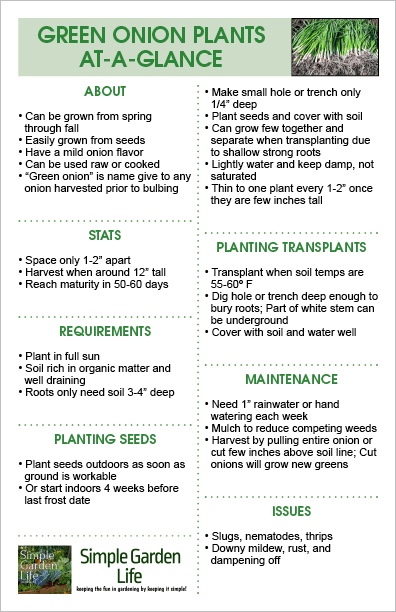Green onions are one of the easiest of crops in the garden to plant and grow from seed. Paired with their quick germination rate and short growing span, they are the perfect addition to any home garden. Especially when you consider they don’t require a lot of space to grow!
Due to their shallow root system, green onions can grow in almost any container. In fact, they can survive and thrive in vessels that are only 3 to 4 inches deep. This makes them wonderful for gardeners who might be lacking traditional growing space.
Green onions feature a mild onion flavor. Unlike bulb onions, they can easily grow from seeds, with the ability of harvest within just a few short months.
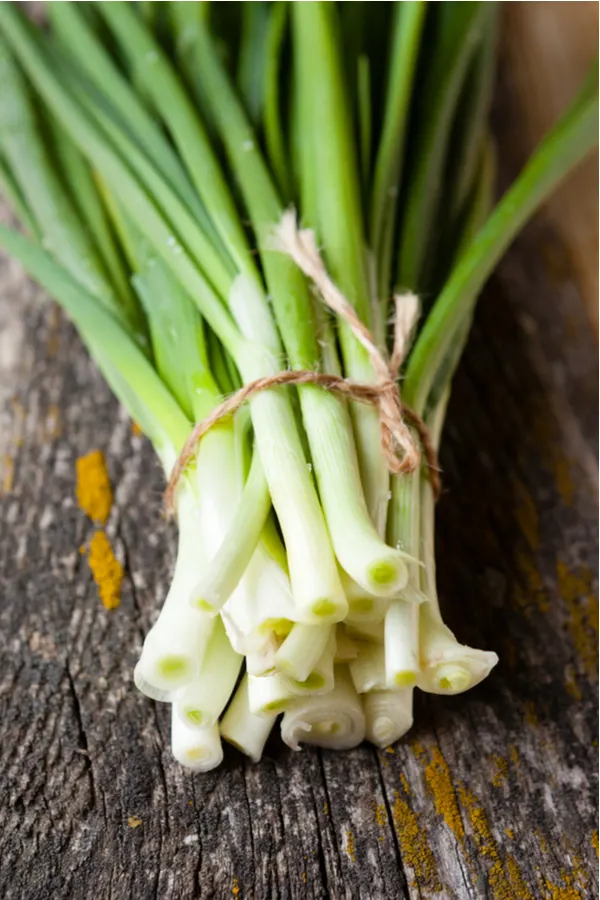
In fact, green onions are actually edible at any point during their growth period. If left to grow, green onions will reach full maturity around 50 to 60 days from planting from seeds. But for many home gardeners, they are too good to ever let them reach that point!
Whether you plan on using them fresh to top your morning omelet or sauteed with your favorite Asian cuisine dish, green onions make a delicious addition to many culinary dishes.
Benefits of Planting Green Onions from Seeds
There are many different reasons to grow green onions from seeds. First, you have the benefit of purchasing your seeds early in the season to avoid missing out on your preferred variety. There is no worry about the seeds sprouting prior to planting like you might face with onion sets.
In addition, seeds cost substantially less than sets or transplants. You can purchase a pack of 25 to 50 seeds for just a couple of dollars.
Lastly, you can store unused seeds to use in future years. Most onion seeds can last around two years when stored properly, if not longer.
Green Onions, Spring Onions, Scallions, Bunching Onions & Chives – Oh My!
There is a lot of confusion when it comes to the different types of “green onions”. With that in mind, here is a quick rundown of the various names and types associated with the “green” term.
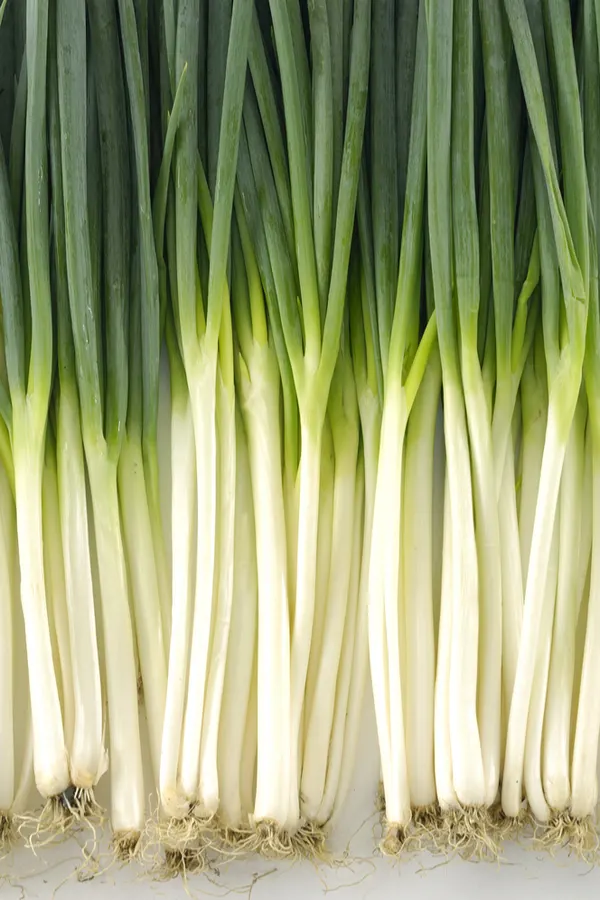
Green Onions
“Green onion” is a general label for any type of onion that you harvest before it produces a bulb. They are typically what you see bunched together and sold at local grocery stores.
You can serve green onions raw or cooked. They are extremely popular in a lot of Asian dishes.
Spring Onions
Spring onions, on the other hand, are bulb onions that are planted as seeds in the late fall and are then harvested in the springtime. Salad onions is another name often used when referring to spring onions.
The bulbs of spring onions are only around 1 inch in diameter when harvested in the spring. If left to grow, spring onions will go on to produce large, full-sized bulbs.
The purpose of harvesting onions at this stage is that the bulb has a milder onion flavor than its fully-grown counterpart. However, the greens of spring onions are tough and not the most pleasant to eat.
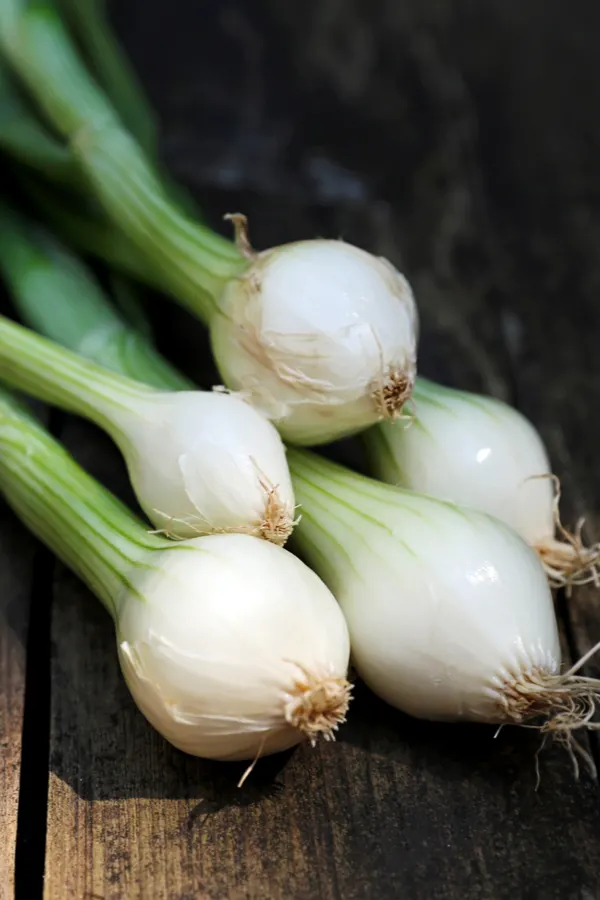
Scallions
Scallions, on the other hand, look like young green onions. They are grown to feature a longer white base and do not usually produce bulbs.
Scallions have a milder flavor than traditional green onions, and their greens are more tender than green onions. You will sometimes see scallions labeled as green onions at supermarkets.
Bunching Onions
Unlike the previously mentioned onions that are Allium cepa, true bunching onions are Allium fistulosum. No matter when you harvest, bunching onions will not produce bulbs. You can use bunching onions similarly to scallions in culinary dishes. They often will carry the name of green onions as well.
Chives
Chives are Allium schoenoprasum, an herb that is a relative to onions and garlic. They are typically chopped and used raw as a garnish in dishes. Chives often grow in herb gardens and are extremely durable and drought tolerant.
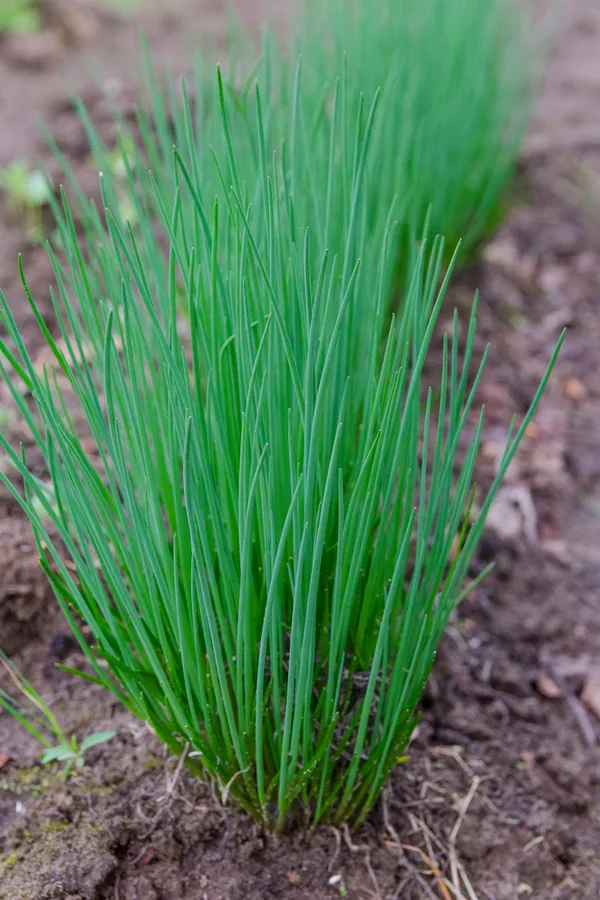
How To Plant, Grow, And Maintain Green Onions
Now let’s take a look at how to plant and grow green onions successfully – from seed to harvest!
Soil Requirements for Green Onion Seeds
Green onions prefer soil that is organically rich and well draining. The exact soil pH isn’t really important when growing green onions, but it does need to be full of nutrients for proper growth.
Green onions do not need loose soil to expand like bulb onions do. They can actually grow quite successfully in more dense, clay-like soil. Just ensure that you amend the soil with compost to provide nutrients.
You can plant green onion seeds outdoors as soon as the ground is workable. For transplants, wait until the soil is around 55º to 60º Fahrenheit (13º to 16º Celsius) before moving outdoors.
Planting Green Onion Seeds
You can start green onion seeds indoors or directly sow them outside. In addition, you can easily start and grow seeds in containers as well. When seeding outdoors, most prefer the ease of seeding directly into the soil.
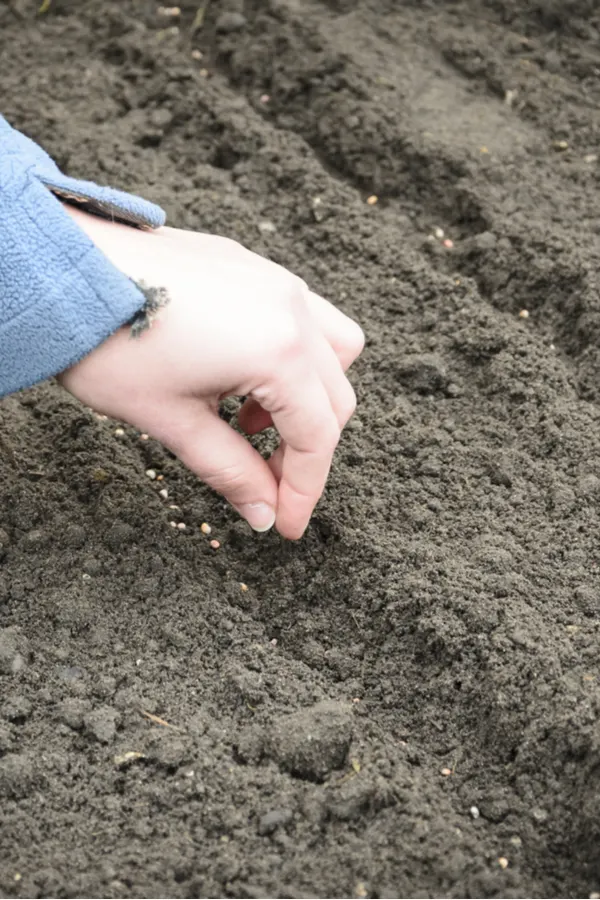
Planting Seeds Outdoors
Choose a location that receives full sun. You can plant green onion seeds in partial shade, but they will have better success in full sun.
Loosen the top few inches of soil in the growing location and amend with compost. Green onions can be planted closely together since they are harvested prior to producing bulbs. Make a small hole that is around ¼ inch deep using either your finger or a small dowel. Space holes about 1 to 2 inches apart in all directions.
Place a couple of green onion seeds into each hole and cover lightly with soil. Alternatively, you can also make a trench and space seeds throughout the trench.
Water lightly, ensuring that the soil is moist but not saturated. Once your green onion seedlings are a couple of inches tall, thin to one onion every one to two inches.
Starting Seeds Indoors
Start your seeds indoors about 4 weeks prior to your projected last spring frost date. Using purchased or homemade seed starting soil, place a couple of green onion seeds per container and cover with ¼ inch of soil. Water lightly, making sure to keep the soil damp.
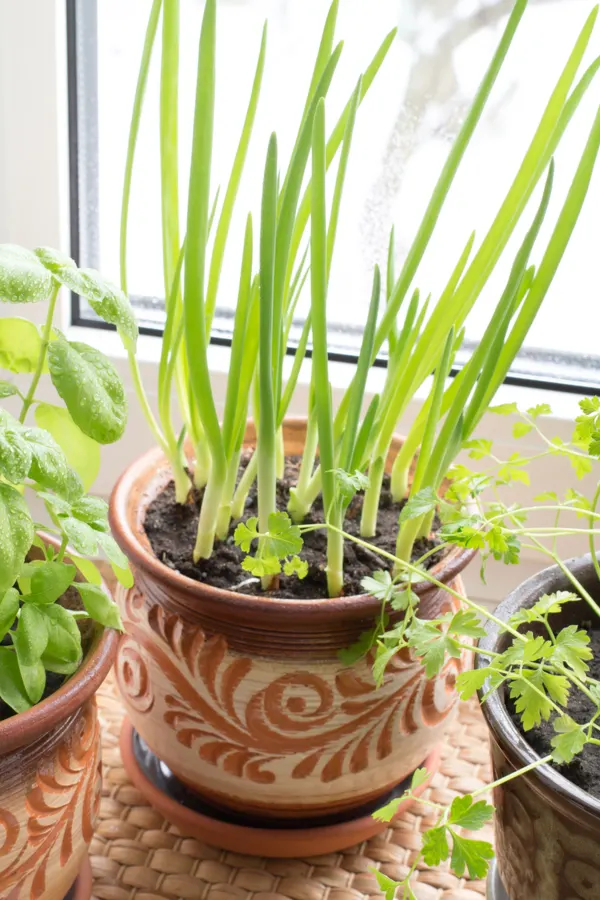
Keep soil moistened throughout growing but not saturated. Seeds can easily spoil with too much moisture. To test soil moisture, place a pencil down into the soil, if it comes up with a bit of soil clinging, there is plenty of moisture present for sprouting.
As long as the seedlings are spread out in the container with an inch of room or so, you can let each of them grow. Green onions actually have rather strong root systems. Therefore, you can easily separate them when it’s time to transplant outdoors.
Consider starting seeds every few weeks to ensure that you constantly have a fresh crop ready for transplanting and harvesting. For more information on continued planting, check out our podcast on Succession Planting.
Planting Transplants
Once your soil reaches around 55º to 60º Fahrenheit (13º to 16º Celsius), you can transplant your green onion seedlings outdoors.
Carefully remove the onions from their container by gently pulling low on the stem. Shake off any excess soil. The green onions will likely come out as a group. You can gently untangle them from one another with a little patience and transplant them individually.
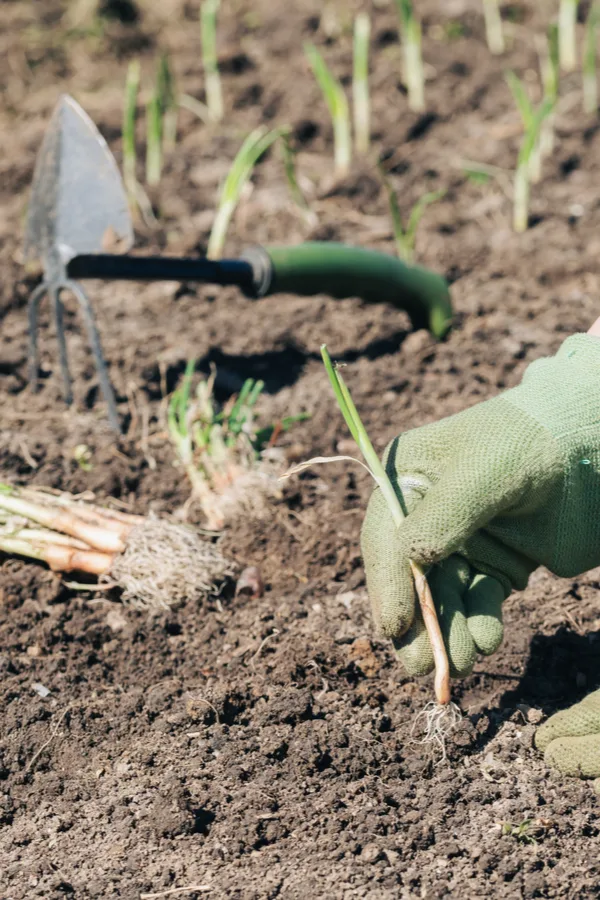
Similarly to planting seeds outdoors, you can make individual holes for each transplant, or you can make a trench. Add an inch or so of compost prior to adding the seedlings to give the green onions a great head start to grow.
The hole or trench only needs to be an inch or two deep. Ensure that the entire root system of the seedling is underground prior to covering with soil.
Do not worry if some of the white parts of the stem is underground as well. This will not harm the plant as it is more important to have the roots deep enough from the start. Water well, but do not saturate seedlings.
Long-Term Care – How To Plant, Grow & Maintain Green Onions
You will need only a little maintenance to grow a great harvest of green onions. By using succession planting or by not fully harvesting green onions, you can continually have a great harvest all summer long.
Watering
Green onions need around 1 inch of rainfall or hand watering each week. Any more and you will run into issues with rotting.
Don’t allow the soil to completely dry up, however. Much as with seedlings, you can check the dampness of the soil, this time by using your finger. If the soil is dry a few inches down, it’s time to water.
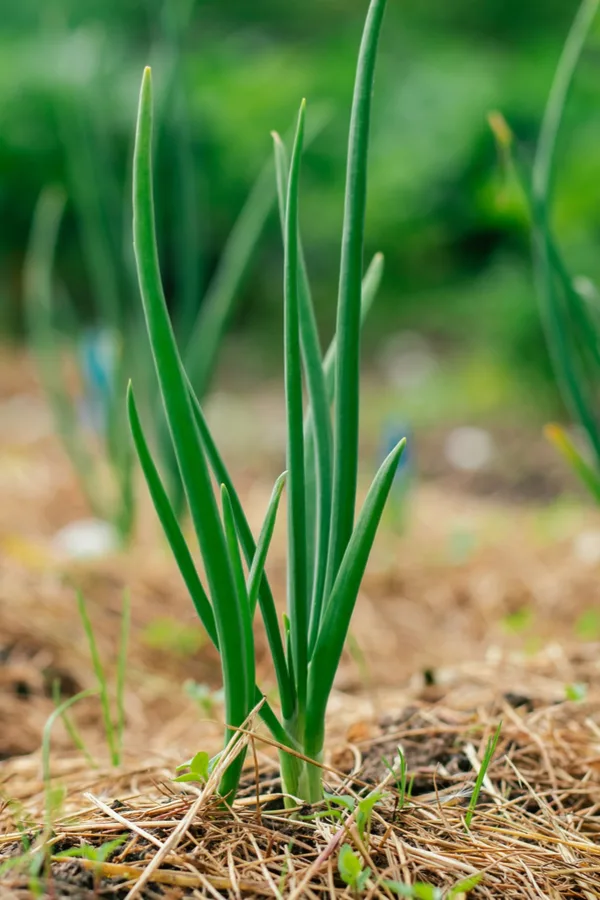
Mulch
Due to their shallow root system, green onions have a hard time competing with weeds. Consider adding a light later of mulch after your plants are a few inches tall. Mulching will also help to retain moisture during long spells of high heat.
Pests & Issues
Green onions are susceptible to the usual garden pests like slugs and nematodes. In addition, downy mildew, rust, and dampening off can all be potential problems for green onions. Overall, they are a fairly hardy crop that experience few issues.
Harvesting Green Onions
Harvest green onions when they are around half an inch in diameter and 12 inches tall.
There are two main ways of harvesting green onions once they have reached your desired size. First, you can pull green onions from the soil in one whole piece. If your soil is loose, simply grab the green onion by the base and gently pull.
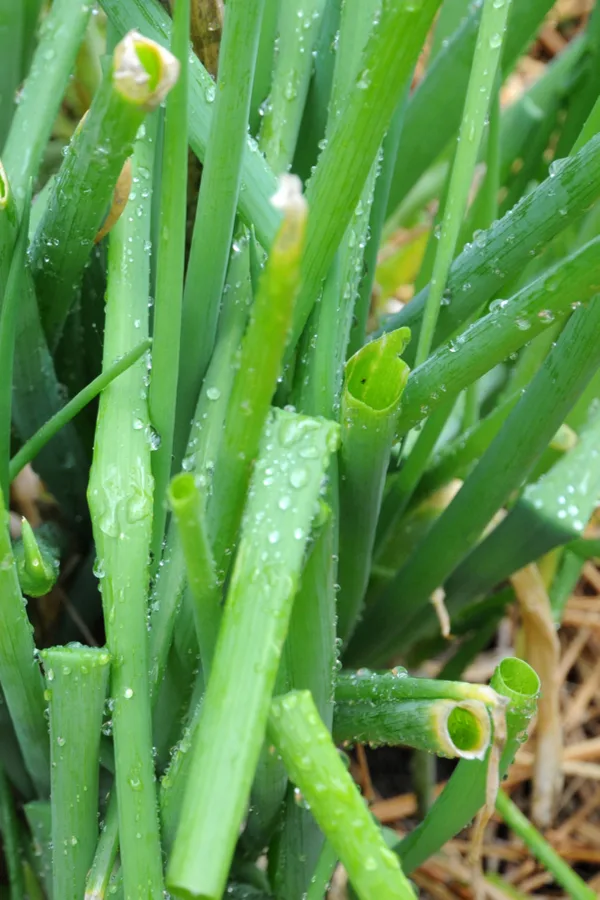
If your soil is more compacted, just use a small garden trowel or shovel to carefully dig down and loosen the soil around the green onions. Pull the entire onion (roots included) from the soil.
Alternatively, you can use a pair of small gardening shears or kitchen scissors to cut the green onions off. Cut the stem about two inches above the soil line. The remaining base will continue to send up new green stems for additional use.
To Conclude…
Green onions are a great addition to any garden or home setting. They don’t take up a lot of space to grow. Even better, you can quickly harvest them after planting from seed.
Feel free to download, print out, or save our Green Onion Seeds At-A-Glance sheet. The sizing is for half letter printing, but you can scale to fit as well.
Follow Our Facebook Page For Even More Great Tips! Simple Garden Life Facebook Page
Simple Garden Life is a website dedicated to keeping gardening fun, simple and enjoyable! We publish two new articles each week along with a new garden podcast episode every two weeks. This article may contain affiliate links.
